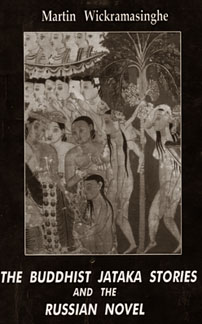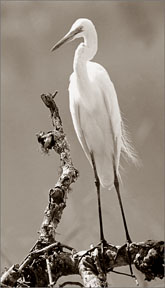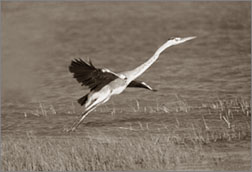Linking Prince Myshkin with the Bodhisatva
Reviewed by Aditha Dissanayake
Now that I have read Martin Wickramasinghe's "The Buddhist Jataka
Stories and the Russian Novel" I believe one of the new year resolutions
I have been making for the last three years that of reading "Brothers
Karamazov" to the end, need not be repeated next year.
Now that I have read there are similarities between Father Zossima
and the Bodhisatva I am confident I can go through the bulky volume in
one breath, trying to justify for myself the claim that Father Zossima
has many similarities with the character of the Bodhisatva as depicted
in the Jataka stories.
 In the first of the two essays of this volume now on to its fourth
edition, Martin Wickramasinghe introduces the reader to the literary
aspects of a few selected Jataka stories and in the second chapter from
which the title is derived, compares certain recurring types of
characters in the Jataka stories with the characters of Dostoevsky's
major novels. In the first of the two essays of this volume now on to its fourth
edition, Martin Wickramasinghe introduces the reader to the literary
aspects of a few selected Jataka stories and in the second chapter from
which the title is derived, compares certain recurring types of
characters in the Jataka stories with the characters of Dostoevsky's
major novels.
He also explores the similarities of the philosophy of life implied
by these characters; similarities for example in the Ananusochiya Jataka,
where the Bodhisatva, born to a Brahmin family is portrayed as a young
man who is incapable of having any physical love for a woman, with that
of The Idiot where Prince Myshkin fails to love (in the Western sense of
the word), two beautiful and enigmatic women, Natasya and Aglaia.
Sage Wickramasinghe believes the English language lacks a precise
word to describe Myshkin's feelings towards these women and suggests the
Pali word Metta would correctly define Myshkin's feelings. "The
Boddhisatva represents the Buddhist conception of the character of an
imperfect human being striving to attain moral and spiritual
perfection....and Prince Myshkin is also the same type.."
On page 82, he confesses that even though when he first read
Dostoevsky's Idiot he had thought by creating the character of Myshkin
Dostoevsky had anticipated Ghandi and that after reading the other major
novels he was haunted by a vague idea of an affinity between the Russian
novel and the Jataka stories he had treated these thoughts as figments
of his imagination and forgotten about them till he read Andre Gide's
"Dostoevsky" where Gide observes "Dostoevsky leads us, we may take it,
if not to anarchy, to a sort of Buddhism, or at least quietism..."
But whereas Gide leaves off with these vague suggestions, sage
Wickramasinghe, analyses this concept in simple yet profound terms.
He shows clearly that unlike the characters of most Western novels
who are persons of intellect the heroes of Dostoevsky's novels are
disturbed by an inner urge or restlessness.
Their idea of honour like that of the characters of the Jataka
stories, is humility and compassion. Myshkin and Father Zossima become
saints by surrendering their individuality and intellect. In most of the
Jataka stories too the Bodhisatva becomes a homeless wanderer or saint
by completely surrendering his individuality and intellect."
Not only in the fictional characters, but in the lives of the Russian
novelists too, sage Wickramasinghe sees similarities with certain ideals
of life of the ancient Indians.
Here is how he describes Nicholai Gogol, the father of the Russian
novel. Gogol, "after writing his masterpiece, Dead Souls, became tired
or discontented with life...he left Russia, wandered like a tramp on the
Continent and settled down in Rome but later went back to Moscow where
he died."
Tolstoy too was dissatisfied with his domestic and social life and
after renouncing his property preferred to live like a recluse. He
dressed like a peasant, chopped firewood, cooked his own food and mended
his own boots...finally he` left this "forest" life to become a
wanderer." These stages of the writers lives are similar to the phase
known in ancient India as that of the sannyasi (the homeless wanderer).
In the Appendix in an unpublished article focusing on Gorky he draws
similarities between Patachara and Gorky's The Birth of a Man and
reveals interesting tidbits about Gorky; his real name was Alexie
Maximovich Peshkov; the pseudonym Maxim the Bitter suggests his attitude
to society and life etc.
Though at a glance the gap between the Jataka Stories and the Russian
novel seems as wide as the distance between the sky and the earth, on
reading "The Jataka Stories and the Russian novel" it is easy to realize
that the basic psychological and spiritual elements, the conflict
between reason and intuition, pride and humility that combine to make
the puzzling characters of the Russian novel can be detected in the
characters of the Jataka stories too.
Still sceptical? Follow me and start reading Brothers Karamazov. You
might fall asleep in five minutes, but if you read the Jataka stories
and the Russian novel first you might find yourself turning into an
insomniac till you reach the end of Brothers Karamazov.
[email protected]
Attention! Armchair bird watchers
Title: Portraits, birds of Sri Lanka
Author: Sunil Gunaratne
Printed by: Karunaratne & Sons Ltd.
|

The Cattle Egret
(Harak koka/Unni Kokku)
|
|

Spot-billed Pelican
(Pas boruwa/Kulai kida)
|
“Birds and art fit together”. I don’t know if I am quoting someone or
not. But if no one had said this before, it’s high time they did -
specially with a book like this in their hands.
Almost every photo in Portraits; birds of Sri Lanka by Sunil
Gunaratne is a masterpiece. A mixture of full page stunners and smaller
images, every photo carries a brief description giving ample details
about the bird, the location and sometimes even interesting anecdotes.
The “White-breasted water hen for example carries the following
description; “The picture... was taken from my car at the bund of a tank
in Tissamaharama.
The bird was literally at arms length from the lens, and it was a
surprise for both me and the bird, meeting face to face at such close
range. Just as my vehicle stopped and I spotted it, I was quick enough
to click the camera, simultaneously.
The black jacketed bird with a white shirt front is common all over
the island, except in the highest hills. It is constantly on the move,
flicking its tail, to show the rust coloured under-tail covets....The
usual call of the bird puwak-puwak has given rise to a popular folk
tale.
The tale goes that the bird had once upon a time been an Arecanut
seller and had one fine day, lost his bag of Arecanuts(Puwak) while
crossing a stream, and ever since, had been hopelessly looking for it by
repeatedly crying puwak-puwak’. The Sinhala name of the bird (Korawakka)
as well as the Tamil name (Kanan Koli) makes the book uniquely Sri
Lankan.
|

Grey Heron
(Hansaya Ranakawa/pambu Kuruvi) |
A simple glance of the photos is enough to realize here is a rare
photographer who has captured the colours, the wildlife, the landscapes
of the country in a unique, aesthetic manner.
Even though it is unlikely you will ever jump into the jungle these
photos will make you more aware of all the millions of details which
have to be right to make a good photo. Having always been more
interested in reading and writing than in bird watching or photography,
I confess before I set eyes on this book I had never thought of
photographing birds. But I realize now that bird photography is also a
kind of ‘writing’ the pen replaced by the lens.
Great photos. Useful information. Clear organization and elegant
layout. Here is a must read for anyone keen on the birds of Sri Lanka,
specially those who are not going to spend hours hidden behind a bush
waiting for a rare bird to show up.
If you love birds this is the book for you and if not, by the time
you reach the last page, you would have learnt to love them.
Aditha Dissanayake |




 In the first of the two essays of this volume now on to its fourth
edition, Martin Wickramasinghe introduces the reader to the literary
aspects of a few selected Jataka stories and in the second chapter from
which the title is derived, compares certain recurring types of
characters in the Jataka stories with the characters of Dostoevsky's
major novels.
In the first of the two essays of this volume now on to its fourth
edition, Martin Wickramasinghe introduces the reader to the literary
aspects of a few selected Jataka stories and in the second chapter from
which the title is derived, compares certain recurring types of
characters in the Jataka stories with the characters of Dostoevsky's
major novels. 











